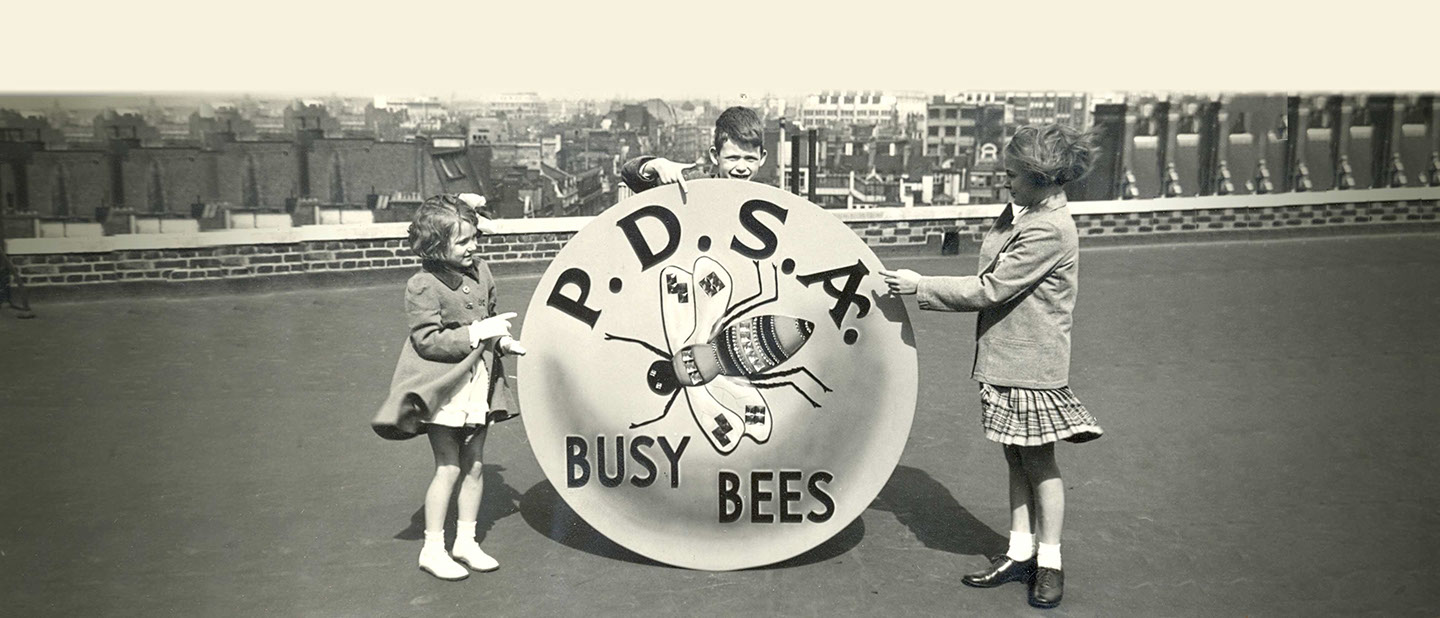

From Busy Bees to Pet Protectors
 Education has always been at the heart of what we do at PDSA – and particularly educating children to look after their pets.
Education has always been at the heart of what we do at PDSA – and particularly educating children to look after their pets.
In 1929 Maria Dickin introduced the Busy Bees Movement to help teach children to care for all animals: working, domestic and wild.
Alongside the Busy Bees Club, Maria formed the St Francis Ambulance Corps asking children to bring sick or lost animals to any PDSA dispensary. At its height, the Busy Bees movement was one of the largest youth initiatives in Europe, with more than 200,000 members.
On enrolling into the club, members were given a yellow Busy Bee badge, a membership certificate and further badges could be earned. A red badge was awarded to Busy Bees in recognition of the practical help they gave with the working of a Hive, such as leading a section, or selling copies of the Busy Bees News each month.
The blue badge was given to a member for ‘outstanding’ service over a period of time: ‘where there is some special circumstance indicating a supreme effort’. There was also a green badge that was given to members for helping to promote subscriptions to Busy Bees’ News.
The members’ certificate read: This is to certify that… has been enrolled as a PDSA Busy Bee and has promised to help PDSA. By wearing the Busy Bee badge members were constantly ‘buzzing’ about the work of PDSA, collecting ‘honey for the hive with articles of all descriptions, used stamps, silver paper, tin and lead foil, metal milk bottle tops, rags, bandages, farthings etc and for being kind to all animals.

Ever since 1992 we’ve encouraged children to become Pet Protectors. The club continues to thrive today, teaching responsible pet ownership to five to fourteen-year-olds in a friendly and informative way. Were you a Busy Bee? Please write in and let us know your story.














